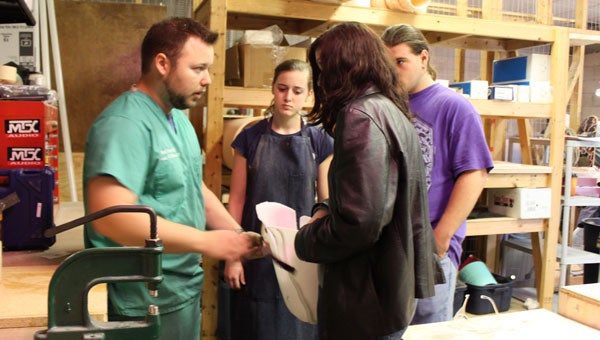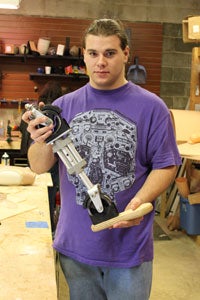Students continue work on prosthetics
Published 8:29 pm Sunday, January 22, 2012

Adam Williams describes the design for the leg socket to students from Brian Copes' engineering class, including Amy Copes, Tyler Pearce and Emily Copes. (Reporter photo/Christine Boatwright)
By CHRISTINE BOATWRIGHT / Staff Writer
ALABASTER – A group of Calera High School students spent their Saturday morning at Next Step in Alabaster developing additional parts for fully functional prosthetic legs Jan. 21.
The students of Brian Copes’ engineering class watched as Next Step’s prosthetist Adam Williams cut the plastic for a future prosthetic “socket.” The socket is the piece that attaches the prosthetic leg to the person’s leg, Williams said.
The prosthetic leg itself was made from motor mounts and aluminum, and it weighs about six pounds, senior Tyler Pearce said.
“The first leg was made out of steel pipe,” Pearce said. “We’ve made some modifications, but it’s still in prototype form. It works just like an ordinary prosthetic leg.”

Tyler Pearce holds the prosthetic leg the engineering class developed over the past year and a half. (Reporter photo/Christine Boatwright)
As the students plan to take the prosthetic legs to those in need in Honduras during the summer, Williams, Copes and the students endeavor to develop a prosthetic that is adjustable and practical.
“This will give more flexible function,” junior Korien Custard said of the leg socket. “We’ll put a strap over it and put rubber on it so it’ll fit the leg.”
As prosthetics are made custom-fit to the person, the rubber and adjustable strap will enable the Hondurans to use the prosthetic without a customized fit. The group will create small, medium and large options to fit the Hondurans.
Williams said the students added an adjustable part of an underarm crutch to allow for the prosthetic leg to shorten or lengthen according to the recipient. The students added the adjustable portion to specifically accommodate children. As the child grows, the prosthetic leg is adjustable, allowing for the child to continue to use the prosthetic limb.
“We’re developing an ‘off the shelf’ prosthetic leg,” Williams said. “They will be functionally comparable to modern prosthetic. The part that attaches to the leg is always built custom to the person.”






